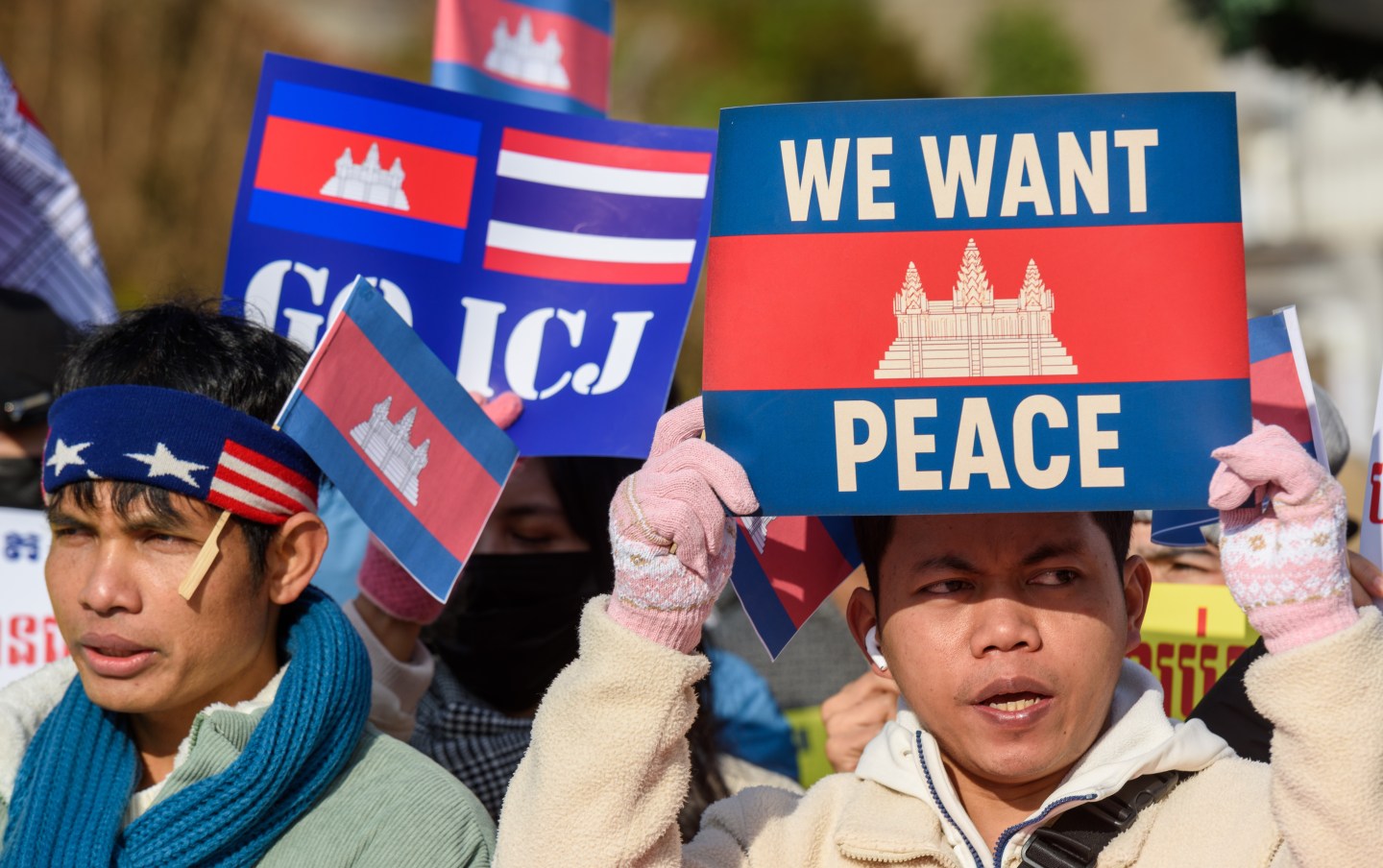A fire that broke out at a Hong Kong apartment building and soon engulfed seven towers has killed at least 94 people, with hundreds still missing. Although rescue operations are still underway and total casualties are yet to be tallied, it’s already one of the city’s worst ever residential fire disasters.
The blaze began at around 3 p.m. on Nov. 26 at the Wang Fuk Court complex in Hong Kong’s suburban Tai Po district. By around 2 a.m., it had largely been brought under control, although fires were still seen burning in some units several hours later.
A “red” warning—signaling extreme fire risk due to weather—had been in place for Hong Kong since Monday, although authorities said the fire spread far more intensely and faster than would normally be expected. Attention has turned to the materials used in renovation work at the towers, including plastic sheeting and the traditional bamboo scaffolding that’s commonly used for Hong Kong construction projects.
With many questions still unanswered, here’s what we know so far.
How did the fire start?
While the cause of the blaze has yet to be formally identified, scaffolding on one of the buildings at Wang Cheong House—block F— caught fire first.
According to The South China Morning Post, residents complained about fire alarms failing to go off even after locals could smell smoke. Those inside were alerted only when a security guard knocked on their door, former district councilor Herman Yiu Kwan-ho said, according to the newspaper. Residents of several buildings made calls to report that they were unable to escape, public broadcaster Radio Television Hong Kong reported earlier, citing a police statement.
Video footage showed the blaze still raging into the evening. By around midnight on Nov. 27, the fire was largely under control, although fired were still seen burning in a handful of apartments at about 9:30 a.m., according to live footage. Several people were seen being carried out of the complex on stretchers at around 10 a.m.
Altogether, more than 140 fire engines and at least 800 firefighters, as well as about 60 ambulances, attended the scene. One firefighter died and several others were injured.
How did the fire spread so quickly?
Firefighters arrived on the scene five minutes after being alerted, but they struggled to enter the buildings due to the high temperatures and falling debris and scaffolding.
So far it’s not clear how the fire spread so quickly. Vincent Ho, founder of Hong Kong think tank the Institute of Building Safety, listed the flammable bamboo scaffolding, the close proximity of the buildings and the possible presence of materials that were not sufficiently fire resistant among plausible reasons.
Hong Kong’s Secretary for Security, Chris Tang, said that “protective netting, waterproof cloth and plastic sheeting on the exterior of the building burned far more intensely and spread much faster than compliant materials normally would.” He called the situation “unusual.”
Styrofoam found at the scene also accelerated the spread of the fire through the corridors into some units, according to a fire department official. It also produced thick smoke and heat, making it more challenging for firefighters to navigate the scene.
How have authorities responded?
Lee announced a task force to investigate the blaze, promising that any wrongdoing would be pursued “in accordance with laws and regulations,” and that all ongoing renovation sites using scaffolding would be checked for proper materials and fire safety. Police arrested three senior figures at an engineering company on suspicion of manslaughter.
Lee said in a statement that he’d ordered an all-out effort across government departments to put out the fire and rescue those trapped. He, as well as China’s President Xi Jinping, expressed condolences to the families of the deceased and injured. Xi also asked other local governments to aid Hong Kong, according to the official Xinhua News Agency.
What do we know about the Hong Kong apartment complex?
Wang Fuk Court, which has close to 2,000 units, is estimated to house nearly 5,000 people. Hong Kong estates are densely populated, with multi-generational families often living inside one small apartment.
The Tai Po district, in the north of Hong Kong, about 30 kilometers (19 miles) from the central business area, is home to about 300,000 people and encompasses housing for various income ranges, alongside parks and shopping malls.
The complex was built as government-subsidized housing in the 1980s and was undergoing a lengthy renovation. The affected seven buildings — out of a total of eight in the complex — were covered in bamboo scaffolding and mesh as part of the construction work.
Government inspectors had flagged safety risks at the complex before the fire. Regulators conducted 16 checks on the renovation project since construction work started in July last year. They also issued repeated written warnings urging the contractor to put proper fire-prevention measures in place — including as recently as the week before the disaster, according to the Labour Department.
The renovation work at Wang Fuk Court was carried out by Prestige Construction & Engineering Co. Bloomberg News visited Prestige’s office on Thursday, but the shutters were down and no one responded despite repeated knocking. Phone calls to the office went unanswered.
Is bamboo scaffolding normal in Hong Kong?
Bamboo scaffolding has been a common feature of Hong Kong construction sites for over a century. It’s cheaper than steel and is seen as a more versatile, adaptable option for projects in a densely populated city where there’s often limited space between buildings.
The government moved recently to phase in the use of more metal scaffolding, citing safety concerns surrounding bamboo due to its high combustibility and tendency to deteriorate over time.
Are fires like this common in Hong Kong?
Hong Kong has had several notable high-rise fires in recent years, although deaths are rare. A group called the Association for the Rights of Industrial Accident Victims said this was the fourth fire involving scaffolding this year.
Scaffolding surrounding a commercial building in the financial district went up in flames last month, causing four people to be hospitalized. In 2023, a 42-story hotel under construction in the tourism district of Tsim Sha Tsui caught fire before being brought under control.
Until the latest disaster, the deadliest residential building fire in recent decades was a 1996 blaze. Forty-one people died in the 16-story Garley Building in the densely populated Jordan district. In 1962, a blaze tore through a tenement building, leaving 44 dead.
A fire in a Shek Kip Mei shanty town in the northeast of the Kowloon peninsula on Christmas Day, 1953, displaced tens of thousands of refugees, prompting the government to start providing public housing and helping to improve the living conditions of many lower-income families.
What will happen to the towers’ residents?
With seven of the eight towers affected by the blaze, the number of people who have lost their homes could be in the thousands, though there is no exact number at this point. As of Thursday night, the government said there were more than 500 residents staying in nine temporary shelters.
The government has arranged accommodation in hotels and youth hostels for the next few weeks, but finding more permanent accommodation for them in a city notorious for its tight housing market will be a challenge.
Volunteers and nonprofit organizations mobilized to distribute daily necessities for affected residents, including food, water, clothing and blankets.












